
Directions
-
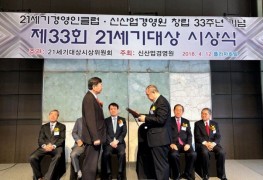
김진형 명예교수 ˝21세기 대상˝ 기술부문 선정
지난 4월 12일 전산학부 명예교수인 김진형 교수가 21세기 대상 기술부문에 선정되었다. 21세기 대상은 신산업경영원이 1986년 21세기 경영인클럽 창립을 기념해 제정한 상으로 국내 산업 발전에 기여한 경영인들을 기리는 ‘재계의 노벨상’으로 평가받는다. 수상을 축하드립니다.
...Read more -

KAIST 전산학부 김문주 교수 연구실 ICST 2018에서 우수논문상 수상
KAIST 전산학부 김문주 교수 연구실에서 발표한 "Invasive Software Testing: Mutating a Target Program to Diversify Test Exploration for High Test Coverage" 논문이 CORE Rank A급 우수학회인 IEEE International Conference on Software Testing, Verification and Validation (ICST) 2018 (acceptance rate:25%) 에서 Distinguished Paper Award 를 수상했습니다. 해당 논문은, 기존의 SW 테스팅 패러다임을 뛰어넘는 새로운 기술인 Invasive Software Testing을 제안한 논문이다. Invasive Software Testing은 대상 SW 프로그램을 변형한 수많은 변이체들로부터 다양한 정보를 추출하여, 기존의 SW 테스팅이 분석하지 못하는 영역의 오류를 효과적으로 검출한다. 본 논문은 Invasive Software Testing 패러다임을 구현한 DeMiner (guiDEed test generation using MutatIoN ExploRation) 프레임워크를 통해, 최신 테스팅 기술대비 SW 분석 효과가 비약적으로 상승함을 실험적으로 입증하였다. 수상을 축하드립니다.
...Read more -
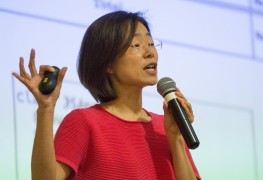
류석영 교수, <Programming> 2018에서 초청강연자로 기조연설
류석영 교수, 2018에서 초청강연자로 기조연설 KAIST 전산학부 류석영 교수가 2018에서 초청강연자로 “Static Analysis of Android Applications for Finding Bugs and Security Vulnerabilities”에 대해 기조연설을 하였습니다. 2018은 The International Conference on the Art, Science, and Engineering of Programming으로, 프로그래밍에 대한 다양한 이론적, 실험적, 공학적 연구 결과를 논의하는 곳입니다. 2018은 4월 9일부터 12일까지 프랑스 니스에서 열렸습니다.
...Read more -
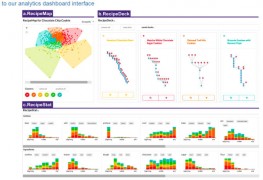
KAIST '순차 지식' 정리해 주는 알고리즘 플랫폼 개발
<왼쪽부터 김주호 KAIST 전산학부 교수, 마니쉬 아그라왈라 스탠포드대 교수, 장민석 박사과정> 전산학부 김주호 교수팀과 마네시 아그라왈라 미국 스탠퍼드대 교수팀, 스위스 로잔공대 연구팀과 함께 각종 순차 지식을 정리하고 분석하는 플랫폼에 관한 기사입니다. http://www.etnews.com/20180409000376 본 연구는 오는 4월 26일 HCI 최고권위 분야 학회인 ACM SIGCHI 2018에 발표될 예정입니다. 프로젝트 웹사이트: https://recipescape.kixlab.org/
...Read more -

KAIST 개발 농식품 유통 관리 플랫폼, 완주로컬푸드 적용
전산학부 김대영 교수의 주도로 개발한 '올리옷(Oliot) 플랫폼'이 국내 최대 규모의 농식품 협동조합인 완주로컬푸드에 적용돼 5일부터 운용에 돌입한다는 기사입니다. http://www.etnews.com/20180403000333 http://www.kaist.ac.kr/_prog/_board/?mode=V&no=79062&code=kaist_news&site_dvs_cd=kr&menu_dvs_cd=0601&list_typ=B&skey=&sval=&smonth=&site_dvs=&GotoPage=1
...Read more -

유신 교수, Empirical Software Engineering 저널 편집위원 선임
KAIST 전산학부 유신 교수는 2018년 2월자로 Springer에서 발행하는 Empirical Software Engineering 학술지의 편집위원으로 선임되었다. Springer의 Empirical Software Engineering은 경험적, 실증적 접근 방법의 소프트웨어 공학 연구를 다루는 SCIE 학술지이다. 2016년 기준 IF 3.275, 5년 누적 IF 3.759의 높은 영향력을 자랑하고 있으며, Google Scholar 기준 Software Systems 분야의 학회 및 학술지 순위에서 12위에 랭크되어 있다.
...Read more -

박진아 교수 KAIST 대표 R&D 연구성과 10선 선정
우리 전산학부 박진아 교수가 "점진적 가변형 모델에 기반한 해마 형태학 연구" 란 주제로 2017년 KAIST 대표 R&D 연구성과 10선에 선정되었습니다. KAIST 대표 R&D 연구성과 10선은 - KAIST R&D 우수성과 발굴·홍보를 통한 연구자의 연구의욕 고취 - 지속적인 Annual Report 발간과 동영상 제작을 통한 우수성과 및 핵심기술 정보 축적 - 체계적인 성과사례 관리를 통한 성과관리체계의 발전적 진화 유도 에 그 취지를 두고 있으며, 수상은 2018년 5월 중 Research Day 행사 시 시행됩니다. 수상을 축하드립니다.
...Read more -
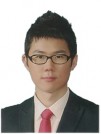
김효수 박사과정, 휴먼테크 논문대상 동상 수상
지난 2월 7일 지난 2월 7일, 삼성전자 휴먼테크논문대상 Computer Science & Engineering 부분에서 KAIST 전산학부 박사과정 학생이 동상을 수상했습니다. 전산학부 박사과정 김효수·조병길 학생 (지도교수 신인식)과 CMU 박사과정 김대혁 학생으로 구성된 연구팀은 모바일 환경에서 touch sound를 활용하여 사용자 touch 위치를 찾는 기술을 개발하여 '동상'을 수상했습니다. 연구팀은 사운드 기반의 새로운 해킹 기법 및 모바일 HCI 기술을 제시한 점에서 높은 평가를 받았습니다. 논문 제목 - TapSnoop: Leveraging Tap Sound to Infer Tapstrokes on Mobile Touch-screen Devices 저자 - 김효수 (KAIST), 김대혁 (CMU), 조병길 (KAIST) 삼성전자 휴먼테크논문상은 미래 과학한국을 이끌어갈 창의적이고 도전적인 젊은이들을 발굴하고 학교 내 연구 분위기 활성화와 기술을 중시하는 사회 분위기 조성을 위해 1994년에 제정된 상 입니다. 수상을 축하드립니다. https://humantech.samsung.com/saitext/board.do
...Read more -
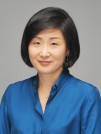
문수복 교수 2018년도 한국공학한림원 일반회원 선정
지난 1월 3일 발표된 2018년도 한국공학한림원(회장 권오경)정회원 관문인 일반회원에 우리 전산학부 문수복 교수가 선정된 기사입니다. 선정을 축하드립니다. 기사보기: http://www.etnews.com/20180103000240
...Read more -

2018년 개교 47주년 기념 우수교원 포상
*사진상(최기선, 한동수, 고인영 교수) 2018년 개교 47주년 기념 우수교원 포상에 우리 전산학부 최기선 교수가 국제협력상 한동수 교수가 이노베이션상 고인영 교수가 우수강의상에 선정되었습니다. 국제협력상은 국제협력 분야에서 실적이 탁월하거나 학교의 국제협력 발전에 크게 공헌한 우수교원, 이노베이션상은 기술이전·사업화를 통하여 관련 산업분야 혁신에 기여하고, KAIST의 우수한 연구 성과물의 공유와 확산에 기여한 교원, 우수강의상은 최근 1년간 강의평가 결과가 탁월한 교원 을 기준으로 선정되었으며 수상식은 오는 2018. 2. 12.(월) 오후 2시, 개교 47주년 기념식 행사에서 진행됩니다. 수상을 축하드립니다.
...Read more -
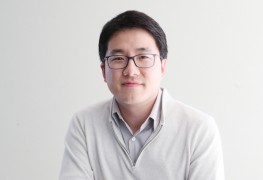
송암(松岩) 미래 석학 우수 연구상 수상
2018년도 송암(松岩) 미래 석학 우수 연구상에 우리 학부 양은호 교수가 선정되었습니다. 송암(松岩) 미래 석학 우수 연구상은 한국호머 이정우 회장의 뜻에 따라, 공과대학 소속 부임 5년 미만의 조교수 중 연구성과가 탁월한 우수 조교수를 선정· 연구활동을 독려하고자 수여하는 상으로 시상식은 제47주년 개교기념식(2018.2.12(월), 14:00) 행사에서 진행됩니다. 수상을 축하드립니다.
...Read more -

박진아 교수 공과대학으로부터 감사패 수여
전산학부 박진아 교수는 2018년 1월 3일에 개최된 공과대학 신년간담회에서 지난 4년간 공과대학 뉴스레터 발간 및 편집위원회 위원장으로써 뉴스레터 KAIST Breakthroughs의 발전에 공헌하였기에 김종환 공대학장으로부터 감사패를 받았다. 수상을 축하드립니다.
...Read more -
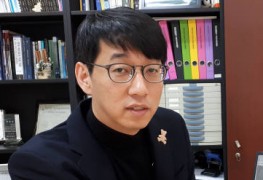
신인식 교수, 스마트폰 전력소모를 절반으로 줄이는 기술 개발
신인식 교수, 스마트폰 전력소모를 절반으로 줄이는 기술 개발 스마트폰 웹 브라우저의 소모 전력을 기존의 40% 수준까지 줄일 수 있는 애플리케이션(앱) 기술이 개발됐다. 스마트폰 전력 소모량의 상당 부분을 차지하는 웹 브라우저 소모량을 줄여 배터리 사용 시간을 대폭 늘릴 수 있을 것으로 기대된다. 신인식 전산학부 교수팀이 웹 페이지 출력 프레임 수를 최적화하는 방법으로 '저전력 모바일 브라우징 기술'을 개발했다고 1월 8일자 전자신문에 밝혔다. 신 교수는 “저전력 모바일 브라우징 기술을 적용하면 소프트웨어(SW)만으로 전체 스마트폰의 전력 성능을 높일 수 있다”면서 “소모 전력 최적화에 나서는 스마트폰 제조사 및 웹 브라우저 앱 개발사에 도움이 될 것”이라고 말했다. 전자신문 기사: http://www.etnews.com/20180105000383
...Read more -
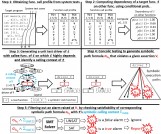
ICSE 2018 논문 채택
소프트웨어 공학 분야 세계 최고 학회인 ACM/IEEE ICSE (Intl. Conf. on Software Engineering)에 우리 전산학부 김문주 교수 연구실의 논문이 채택되었습니다. 본 논문 "Precise Concolic Unit Testing of C Programs with Alarm Filtering Using Symbolic Calling Contexts" 은 전산학부 김문주 교수와 박사후연구원 김윤호 박사가 경북대 최윤자 교수와 같이 작성한 연구논문으로, C 프로그램의 오류를 자동으로 찾으며 거짓 경보를 최소화하는 새로운 유닛 테스트 기술을 연구한 연구논문입니다.
...Read more -
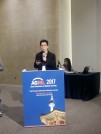
제 9회 머신러닝 아시아 컨퍼런스(ACML) 2017 개최
우리 전산학부 김기응 교수가 General Chair로 참여한 제 9회 머신러닝 아시아 컨퍼런스(ACML) 2017이 11 월 15 일부터 17 일까지 연세대 학교 백양 홀에서 개최하였다. 본 행사에서는 전문가와 연구자들이 머신러닝에 대한 연구 결과와 아이디어를 공유하였으며, 아시아를 넘어 전 세계적으로 머신러닝의 혁신적인 아이디어와 패러다임에 중심을 둔 제안도 함께 논의하였다. ACML은 2009년부터 다양한 산업 분야에서 중요한 역할하고 있는 머신 러닝에 대해 연구자들이 새로운 아이디어와 기술들을 공유해왔다. ACML은 2009 년부터 아시아 지역에서 시작돼 뉴질랜드, 홍콩, 베트남, 호주, 싱가포르, 대만, 일, 중국 등에서 진행됐다. 이 컨퍼런스는 과학자들이 머신러닝에 대한 지식을 폭넓게 이해하며 인사이트를 얻어 기술을 산업에 적용하는 데 기여해왔다.
...Read more -

세계 3대 암호학회 Asiacrypt2020 한국(대전) 개최 예정
김광조 교수는 2017년 12월 3일부터 7일까지 홍콩에서 개최된 Asiacrypt2017 기간 중 12월 4일에 개최된 Asiacrypt 조정위윈회에 참석하여 한국을 대표하여 Asiacrypt2020 의 한국 개최 제안을 발표하고 3:1의 경쟁을 뚫고 한국 개최를 승인 받았다. Asiacrypt 조정위원회는 매년 12월에 개최되는 Asiacrypt 개최국을 공모 및 결정하는 위원회로 현재 아시아와 호주 대륙에서 13개국의 회원국으로 각국별 최대 3명의 대표가 있으며 한국, 일본, 중국, 대만, 홍콩, 인도, 호주, 뉴질란드, 말레이지아, 싱가포르, 베트남, UAE, 파키스탄이 참가하고 있으며 이날 회의에는 파키스탄 대표단은 불참하였다. Asicrypt2020 개최 제안에는 한국, 싱가포르, UAE 3개국이 제안하였으며, 각 참가국별 1표씩하여 12개국의 비밀 투표를 실시한 결과, 한국 6표, 싱가포르 및 UAE는 각각 3표를 획득하였으며, 한국의 지지표가 과반수 표를 얻지 못하였다. 3개 제안 국가를 제외하고 별도 회의를 개최하여 Asiacrypt 조정위원회 의장인 중국 상해교통대학의 Lai 교수가 직권으로 다수표를 획득한 한국 개최를 결정하였다. 내년 4월말 이스라엘에서 개최되는 Eurocrypt 기간 중 IACR(세계암호학회) 이사회에서 추인을 받으면 공식적으로 Asiacrypt2020의 한국 개최가 확정된다. 이로서, Asiacrypt2020은 2020년 12월 6일부터 10일 까지 한국(대전)에서 개최될 예정이며 세계적인 암호 학자들이 대대적으로 한국을 방문할 것이며 한국의 암호학 연구 및 발전에 한단계 상승 효과를 가져올 것으로 예측하며, 카이스트 김 광조 교수는 현재 IACR 석학회원으로 Asiacrypt 2020의 운영 위원장으로 봉사할 예정이다.
...Read more -

김민혁교수, 초소형 초분광 영상기술 소개
KAIST 전산학부 김민혁 교수 연구실에서 개발한 초소형 초분광 영상기술과 관련된 기사가 EurekAlert Science News와 Photonics Media에 소개되었습니다. 본 연구는 수천에서 수억원이상을 호가하는 초분광영상시스템에서만 가능한 초분광 영상기술을 일반 카메라를 이용하여 가능케 한 기술입니다. 김민혁 교수는 기사에서 “인공위성이나 군사용으로만 가능하던 고가의 초분광 영상기술이 일반인들도 쉽게 사용할 수 있도록 하는 중요한 기술적인 초석이 마련되었다”라며 앞으로 초분광 영상기술의 확대 활용에 기대감을 드러냈습니다. 본 연구는 백승환 박사과정(제1저자, 지도교수: 김민혁)과 김인철 석사과정(제2저자, 지도교수: 김민혁) 학생이 사라고자 대학과 공동으로 개발한 연구로서, 세계 최고의 컴퓨터 그래픽스 저널인 ACM Transactions on Graphics(TOG)에 11월 게재되었으며, 또한 이번 ACM SIGGRAPH Asia 2017에서 발표되었습니다. EurekAlert Science News 관련기사: https://www.eurekalert.org/pub_releases/2017-11/afcm-chi120417.php Photonics Media 관련기사: https://www.photonics.com/Article.aspx?AID=62875 Technology Breaking News 관련기사: https://www.technologybreakingnews.com/2017/12/compact-hyperspectral-imaging-at-low-cost/ R&D Magazine 관련기사: https://www.rdmag.com/news/2017/12/compact-hyperspectral-imaging-low-cost
...Read more -
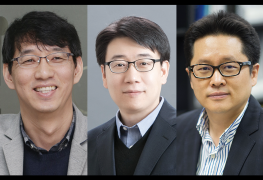
신인식, 허재혁, 김민혁 교수 Microsoft Research Asia 공동 연구 프로그..
신인식, 허재혁, 김민혁 교수 Microsoft Research Asia 공동 연구 프로그램에 선정 Microsoft Research Asia (MSRA) 공동 연구 프로그램은 상호 관심있는 연구 주제를 발굴하고, MSRA 연구원과 함께 연구하는 아시아 대학 교수진을 위한 상호 공동 연구 프로그램입니다. 이 프로그램을 통해 아시아에 재능 있는 인재들을 육성하고 고등 교육을 위한 가치 있는 연구 및 기술 파트너십을 확립하고자 하는 일환으로 Microsoft에서 설립한 공동 연구 프로그램입니다. 특히 KAIST는 Tsinghua, HKUST, USTC등과 같이 동일대학 가장 많은 연구과제가 선정된 기관이기도 합니다. 선정된 3편의 연구 내용은 다음과 같습니다. TouchSurface: Supporting Touch User Interface with Sound on Any Surface Insik Shin, KAIST Securing Key-Value Stores with Hardware Trusted Execution Environments Jaehyuk Huh, KAIST Capturing Intrinsic Material Appearance via Spectro-Polarimetric 3D Imaging Min H. Kim, KAIST 7 월 중순에 제안 요청을 발표한 이후, MSRA Collaborative Research Program Committee에서 최첨단 및 공통 연구 관심 분야를 기반으로 신중하게 검토하였으며, 이중 총 62 개의 제안서를 선정하였습니다. 중국 본토, 홍콩, 대만, 일본, 한국 및 싱가포르 등의 35 개 대학교에서 선정되었으며, 저희 KAIST에서는 저희 전산학부에서만 신인식, 허재혁, 김민혁 교수님 세분이 선정되었습니다. 축하드립니다! [관련정보] http://www.microsoft.com/en-us/research/lab/microsoft-research-asia/articles/msra-collaborative-research-2018-award-announcement/
...Read more -
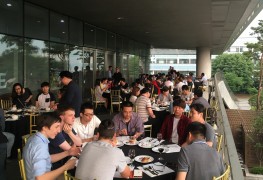
MDM 2017 개최
지난 5월 29일부터 6월 1일까지 송준화 교수와 펜실베이니아 주립대 Wang-Chien Lee 교수는 함께 '모바일 데이터 관리에 관한 국제학회' (IEEE International Conference on Mobile Data Management, 이하 MDM)를 본교에서 4일간 개최했다. 올해로 18회를 맞는 MDM은 모바일 환경에서 새롭게 생겨난 데이터의 처리를 다루는 학회로, IoT, 자율 주행 자동차, 크라우드 소싱, 모바일 사용자의 행동 인식 등 학계와 산업계가 함께 다양한 주제를 다룬다. 13개국에서 온 105명의 연구자가 총 50회의 논문발표가 진행되었으며, 국내외 연구자뿐만 아니라 Google, IBM, Delta Electronics 등의 기업도 참여하여 향후 모바일 데이터의 가능성에 대해 열띤 토론을 진행했다. 본 학회는 IEEE, 카이스트 전산학부, IEEE 데이터 엔지니어링 기술 위원회 (TCDE), 미국 피츠버그 대학, 대전 마케팅 공사, 충남대학교 소프트웨어 연구 센터, 대전광역시의 지원으로 개최되었다.
...Read more -

오혜연교수, KBS 특별기획 4차 산업혁명 시대 과학 콘서트
오혜연교수, KBS 특별기획 4차 산업혁명 시대 과학 콘서트 강연 금번 KAIST와 KBS 대전총국은 공동으로 최근 화두가 되고 있는 '4차 산업혁명'에 대한 국민들의 이해를 높이고 KAIST 의 관련 연구를 소개하기 위하여, "2017 특별기획 4차 산업혁명 시대 과학 콘서트" 프로그램을 기획하고 준비하였습니다. 본 프로그램은 국민 여러분께 “4차 산업혁명” 의 본질과 현상, 그리고 기술의 미래를 대하여, KAIST 의 과학자들이 캠퍼스 현장에서 들려주는, 생생하고 흥미 진진한 이야기를 들려주는 프로그램이 될 것입니다. 10월 31일 (화요일) 저녁 7:35 에 KBS1 채널로 첫 방송이 시작 됩니다. https://youtu.be/NEBcFHFaOQM본 프로그램은 6개월 간 6회에 걸쳐서 제작되고 방송될 예정입니다.
프로그램 사과콘 4.0 (2017 특별기획 4차 산업혁명 시대 과학 콘서트)채널 KBS1 (대전 방송, 추후 전국 방송 예정)일시 10월 31일 19시 35분1회 연사 정재승 교수 (바이오및뇌공학과), 오혜연 교수 (전산학과)주제 4차 산업혁명과 인공지능 많은 시청과 관심 부탁 드립니다. 감사합니다. ...Read more -
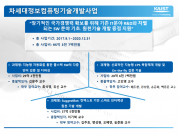
KAIST 전산학부 차세대정보컴퓨팅기술개발사업 선정
지난 9월 19일 과학기술정보통신부와 한국연구재단이 발표한 차세대정보컴퓨팅 기술개발사업(이하 차세정)에 우리 KAIST 전산학부에서 지원한 3개 과제가 모두 선정되었다. 차세정 사업은 "장기적인 국가경쟁력 확보를 위해 기존 IT분야 R&D와 차별되는 SW 분야 기초․원천기술 개발 중점 지원" 을 그 목표로 하는 사업으로 우리 전산학부에서 선정된 세부 과제는 다음과 같다. - SuggestBot: 컨텍스트 기반 스마트 인터랙션 원천 기술 개발 연구목표: 웨어러블 컴퓨팅 환경에서 In-situ, Intelligent, In-time 스마트 인터랙션을 실현하기 위하여 인터랙션 빅데이터, 상황 추론 및 행동 제시 엔진, 웨어리블 UI 및 컴퓨팅 서브시스템을 포함한 소프트웨어 원천 기술 개발 총괄과제 책임자: 이기혁 교수 전산학부 참여교수: 김주호 교수, 맹성현 교수, 오혜연 교수, 송준화 교수 타학과 참여교수: 이의진 교수(산업및시스템공학과) - 신뢰적인 지능형 CPS 복합체계 개발 및 On-the-fly 검증 기술 연구목표: Vehicle to Everything(V2X), 스마트 공장 등의 Cyber-Physical System(CPS) 환경에서의 신뢰적이고 안전한 소프트웨어 개발을 위한 소프트웨어공학 기술 개발 총괄과제 책임자: 고인영 교수 전산학부 참여교수: 배두환 교수, 강성원 교수, 송준화 교수, 백종문 교수 타기관 참여교수: 홍장의 교수(충북대), 유준범 교수(건국대), 강승우 교수(한국과학기술교육대) - 지능형 자동화를 통한 풀스택 SW의 다중언어 검증 및 디버깅: 김문주 교수 연구목표: 스마트디바이스나 IoT 등에 널리 쓰이는 풀스택 SW의 높은 복잡도로 인해 발생하는 오류를 자동으로 검출하고 디버깅하는, 기술집약적 지능형 자동화 알고리즘 연구 총괄과제 책임자: 김문주 교수 전산학부 참여교수: 류석영 교수, 유신 교수 타기관 참여교수: 최윤자 교수(경북대), 배경민 교수(POSTECH), 홍신 교수(한동대) 본 사업의 기간은 2017년 9월 1일~2020년 12월 31일 (3년 4개월) 이며 사업기간 동안 총 95억 3천 여 만원의 연구비를 지원받게 된다.
...Read more -

KAIST 전산학부 최호진 교수팀, 한국전력 “에너지 거점대학 클러스터” 사업 인공지능 기..
우리 전산학부 최호진 교수팀이 한국전력 “에너지 거점대학 클러스터” 사업의 인공지능 기술분야 거점대학 수행후보기관으로 선정되었다. 지난 9월6일 서울대학교 내 한국전력 기초전력연구센터에서 실시된 전력산업 기초연구 에너지 거점대학 클러스터 (응모기술분야: 인공지능) 사업의 수행후보기관 3차 심의평가에서, 전산학부 최호진 교수가 총괄책임을 맡아 KAIST를 거점대학으로 정하고, 충남대, 강원대, 고려대, 연세대를 참여대학으로 준비한 “XAI (eXplainable AI) 기반 스마트 에너지 플랫폼 기술 개발” 과제가 선정되었다. 이 클러스터는 총 참여교수 21명, 참여연구원 및 대학원생 134명으로 구성되며, 총사업비는 년간 23.45억원 규모이며, 제4차 산업혁명의 핵심인 인공지능 기술에 대한 기초연구 활성화 및 핵심기술 조기확보를 목표로, 기존 전력산업 기초연구의 단발성 지원을 탈피한 클러스터 형태의 체계적 지원을 향후 3년간 받게 된다.
...Read more -

이성주교수의 SCAN, 오혜연교수의 Eliph 시스템 KAIST Breakthroughs에..
전산학부 이성주 교수의 모바일 SCAN 시스템과 오혜연 교수님의 연구실의 Eliph 시스템이 KAIST Breakthroughs에 선정 소개되었습니다. 이성주 교수님 연구실의 모바일 SCAN 시스템 (http://breakthroughs.kaist.ac.kr/?post_no=913) 오혜연 교수님의 연구실의 Eliph 시스템 (http://breakthroughs.kaist.ac.kr/?post_no=908) 축하드립니다.
...Read more -
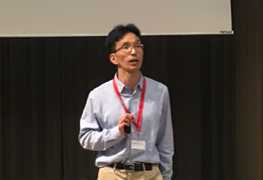
양홍석교수, QONFEST '17에서 초청강연자로 기조연설
KAIST 전산학부 교수 양홍석, QONFEST’17에서 CONCUR, QUEST, FORMATS 통합 초청강연자로 기조연설 KAIST 전산학부 양홍석교수가 QONFEST’17에서 CONCUR, QUEST, FORMATS의 통합 초청강연자로 “probabilistic programming”에 대해 기조연설을 하였습니다. QONFEST’17는 CONCUR, QUEST, FORMATS, EPEW라는 네개의 국제학회로 이루어진 행사인데, 주로 엄밀하게 소프트웨어나 하드웨어 시스템을 기술하고 그들의 성질이나 성능을 분석하는 연구가 논의되는 곳입니다. QONFEST’17는 9월 4일부터 9일까지 독일 베를린에서 열렸습니다.
...Read more -

류석영 교수 연구실 소프트웨어 공학분야 세계 최고 학회 IEEE/ACM ASE에 3년 연속..
소프트웨어 공학 분야에서 세계 최고 학회로 인정하는 IEEE/ACM ASE(Automated Software Engineering)에 우리 전산학부 류석영 교수 연구실의 논문이 채택되었습니다. 본 논문 “All about Activity Injection: Threats, Semantics, and Detection"은 류석영 교수와 이성호, 황성재 학생이 참여하였습니다. 류석영 교수 연구실은 2015년 2편, 2016년 1편에 이어 2017년에 3년 연속 ASE에 논문을 발표할 예정입니다. 참고 : http://ase2017.org
...Read more -

상황에 따라 스마트폰 알림 조절해주는 앱 나온다…KAIST, 인공지능 활용 SCAN 기술 ..
SCAN 기술 개발에 참여한 KAIST 인력. 왼쪽부터 이성주·이동만·김주호 KAIST 전산학부 교수, 박천종 박사과정, 임준성 현 삼성전자 SW센터 연구원 우리 전산학부 이성주 교수팀과 김주호·이동만 교수팀이 함께 스마트폰 사용자의 상황을 자동으로 감지해서 알림 내용 고지 시점을 조절해 주는 '알림해방(SCAN) 기술'을 개발과 관련된 8월 7일자 iPnomics 기사입니다. http://www.ipnomics.co.kr/?p=63868
...Read more -
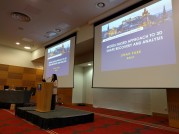
KAIST 전산학부 부교수 박진아, 21st Medical Image Understandi..
KAIST 전산학부 박진아교수는 지난 7월 11~13일 John McIntyre Centre, Pollock Halls, Edinburgh, UK 에서 개최된 제21회 Medial Image Understanding and Analysis (MIUA 2017) 학술대회에서 “Model-based approach to 3D shape recovery and analysis” 라는 주제로 기조강연 (Keynote Lecture)을 하였다. Medical Image Understanding and Analysis (MIUA) 2017은 올해 21번째로 개최된 학술대회 행사로 매년 영국(UK)에서 개최되는 의료영상분석 전문가들을 위한 포럼으로 유럽의 여러 나라뿐만 아니라 미국과 호주, 아시아에서도 참여하고 있으며, 특히 올해 참여한 150여 기관 중 46개는 영국 외의 기관이었고, 접수된 105편의 학술논문과 22편의 임상초록 중 82편이 영국 외 논문이었다고 한다. Honorary Guest Speaker로 Oxford 대학의 Sir Michael Brady 교수, 그리고 기조연설자로 Uppsala 대학의 Ingela Nyström 교수, KAIST 전산학부 박진아 교수, Imperial College London의 Daniel Rueckert 교수가 초청되었다. 박진아 교수는 20여년 동안 연구해 온 의료영상데이터로부터 임상적인 이해를 제공하는 3차원 모델링 기법에 대해 강연을 하였다.
...Read more -

국제고등로봇학회(ICAR) 2017, Robotic planning 분야 Best pape..
KAIST 전산학부 박사 졸업생 이정환, 석사과정 신희찬(지도교수 윤성의) 학생이 지난 7/10~12일 홍콩에서 열린 ‘국제 고등로봇 학회 2017 (International Conference on Advanced Robotics 2017’ 에서 ‘데이터 기반 Kinodynamic RRT(Data-driven Kinodynamic RRT)’에 관한 논문으로 ‘로봇 경로 계획(Robotic planning)’ 분야 Best paper를 수상하였다. 이번 연구는 Kinodynamic 성질을 가지는 로봇의 움직임을 계획할 때, 로봇이 가질 수 있는 상태와 입력값들을 데이터베이스로 만들어 둔 후, 필요 시에 검색하여 사용하는 것에 관한 연구이다. 이를 통해 실시간으로 연산해야 하는 계산량을 현저하게 줄임으로써 움직임 계획의 연산 속도를 크게 향상시켰다. 이정환 박사는 박사 기간 동안 IEEE Transaction on Robotics(TRO), International Conference on Robotics and Automation(ICRA), International Conference on Intelligent Robotics and Systems(IROS) 등 우수 국제 저널 및 학회에 다수의 논문을 게재한 바 있다. [지도 교수 : 윤성의 교수, 제 1저자 : 이정환), 제 2저자 : 신희찬] ICAR 2017 홈페이지 : http://www.ee.cuhk.edu.hk/~qhmeng/icar2017/index.htm 수상을 축하드립니다.
...Read more







